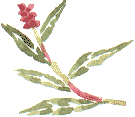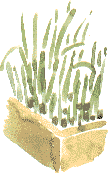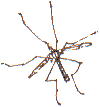Nature Diary
Rocks
History
Gallery
Home Page
 AMPHIBIOUS BISTORT, which was flowering in the canal about a month ago, is now in flower amongst the rough grass on the bank nearby. It looks very much like its relation, Redshank a weed of cultivated ground, but redshank has a dark 'thumb-print' on each leaf.
AMPHIBIOUS BISTORT, which was flowering in the canal about a month ago, is now in flower amongst the rough grass on the bank nearby. It looks very much like its relation, Redshank a weed of cultivated ground, but redshank has a dark 'thumb-print' on each leaf.
 A Lapwing flies over the canal from marsh to pasture. A Common Tern is heading the other way, down the valley following the canal, probably returning to its nest at Pugneys nature reserve a couple of miles away.
A Lapwing flies over the canal from marsh to pasture. A Common Tern is heading the other way, down the valley following the canal, probably returning to its nest at Pugneys nature reserve a couple of miles away.
 A narrowboat moored by the pub has tubs of marigolds on its roof and a large box, planted with Garlic with a couple of rows spring onions around them.
A narrowboat moored by the pub has tubs of marigolds on its roof and a large box, planted with Garlic with a couple of rows spring onions around them.
'We grow enough to keep us supplied during the winter,' explains the woman of the boat.
  After dark, a Crane Fly flies in, in a rather uncontrolled fashion, attracted to the light. This is a true fly, along with hoverflies, clegs, mosquitoes and house-flies, one of the Diptera, a name that means two-winged. The second pair of wings has become modified into a pair of drum-stick shaped organs known as halteres. These seem to assist with balance in flight. They are plain to see in the Crane Fly.
After dark, a Crane Fly flies in, in a rather uncontrolled fashion, attracted to the light. This is a true fly, along with hoverflies, clegs, mosquitoes and house-flies, one of the Diptera, a name that means two-winged. The second pair of wings has become modified into a pair of drum-stick shaped organs known as halteres. These seem to assist with balance in flight. They are plain to see in the Crane Fly.
As children we called these Daddy-Long-legs, a name often given to Harvestman 'spiders'.
|